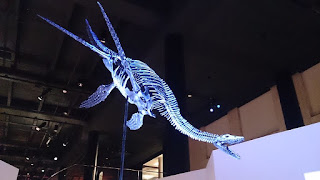William Stukeley, the Royal Society, and a Plesiosaur
Although atheists and other anti-creationists try to avoid inconvenient truths, some of us still try to present them. First, many insist that creationists lack the intellectual prowess to be scientists. We show them that many great scientists of the past were Christians, even biblical creationists.
Then they may whine that we are discussing dead people, so we tell them about modern scientists that are biblical creationists. No, they are disqualified because the only true scientists are materialists. Lather, rinse, repeat, they move the goalposts like they were jet propelled.
 |
| Plesiosaur skeleton, Flickr / Kim Alaniz (CC by 2.0) |
William Stukeley (or Stukely) (1687–1765) was born in Lincolnshire, trained as a doctor, then as an Anglican cleric, and . . . is sometimes considered the father of archaeology and was also committed to defending the biblical account of creation and the Flood in the early 18th century. He was opposed to both deists and atheists through his studies and research. He rose to become a member of the Royal Society, where he was acquainted with Sir Isaac Newton. . .
The entire article is found at "William Stukeley, and an early 18th century plesiosaur."